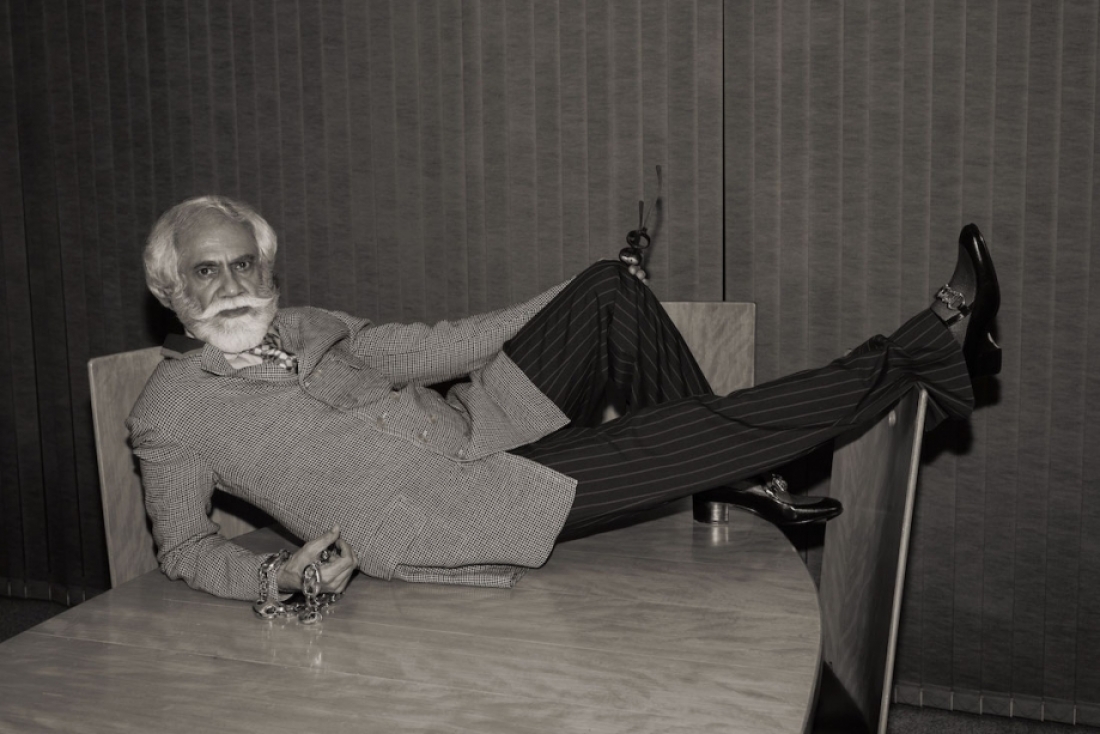
Creative Direction Bharat Sikka Studio. Fashion Director Ameet Sikka. Photography Tenzin Lhagyal

Creative Direction Bharat Sikka Studio. Fashion Director Ameet Sikka. Photography Tenzin Lhagyal
You are an authority in the fashion industry since decades now, what are the three key transformations or changes you have seen in the last ten years?
The last ten years, the fashion universe has seen a sea change veering towards a more conscious approach to design. Focus is on creating classics considering the amount of waste fashion generates, plus the impactful message sent by activist Greta Thunberg, which serves as a wake-up call for everybody. Designers now have an increased global presence and what makes their trajectory relevant is the effective mixing of Western ideology with an innate Indian flavour, bridging the proverbial gap between both sides of the Atlantic. Ensembles now have a universal appeal, as they can be worn world over from the hip LA to monochromatic New York, defying geographical boundaries.
The world right now is going through a tremendous low phase fashion too has been hugely affected – what do you foresee for the fashion industry in the near future?
With economic downturn and recession fashion too has been hit by the slump, buying has suffered exponentially. However, we must not forget that 600 million Indians are below 25 and they aspire to buy trendy clothes. Shopping is an essential part of human existence specially Netizens, whose buying behaviour may have changed from brick and mortar stores to now online retail, but they haven’t given it up altogether and neither do they intend to in the future. The perceptible change I see is some are now shifting to handlooms and it’s heartening to see girls adopting the “new” sari, many want to buy less but the best quality, consumers are varied, tastes are unique, style may be diverse, but as they say “different strokes for different folks”.
How do you curate each fashion week, as one needs to keep evolving. Do you have a board that decides along with you who should participate, what kind of shows to have, who should be the first show and the last? Who should get an offsite etc.
Each India Fashion Week has its individualistic character, this year not only the venue (Dhyan Chand National Stadium) but also the ramp has changed from the regular one to an “O” and “X” shaped. We try and add exciting elements each year, though this season there wasn’t any “opening show”, we concentrated on the finale, which hopes to bring together the feeling of fashion a family thus the moniker #MyfashionMyfamily. Four giants in the fashion world, Wendell Rodricks, Rajesh Pratap Singh, Anamika Khanna and Manish Arora will showcase their expertise in craft and technique.
Interestingly, inclusivity became our lighthouse, this season, as we let go of height, weight, age and body type restrictions that fashion has succumbed to for eons and embraced free-spirited models, who imbue forward-thinking skills. We have a jury that decides who gets a show as well as new entrants and the board does have a big say, however, the offsite and time slots are decided with a consensus. The two-three designers pairing is made after a detailed thought so that the aesthetics match and there are no ragged lines in terms of ideology.
What were the exciting moments and designers at the SS’20 fashion week?
The LMIFW SS’20 is an amalgamation of young guns and established gurus, we maintain a fine balance, though this year, the scale are titling towards a youthful vibe and ethos as they are frankly the future of fashion. We have Rimzim Dadu, who launched her menswear line, as well as Shyma Shetty and Pravav Misra of Huemn, who paid homage to the iconic fizzy brand Pepsi with a distinct collaboration, each one comes with a signature that has a discerning audience. Love Birds with an impressive off site show and Ikai Ragini AHUJA ‘s opening show success - once again confirmed that the Indian market is ready for the new wave of Designers.
What are your views on responsible fashion and are we doing enough?
Fashion now revolves on three parameters--- comfort, functionality and of course, the need of the hour sustainability. There is a marked difference in the thought process of those who belong to the style state, as they feel climate change is real, it will affect all of us in some way. Look at nature’s fury, with the Bihar floods, earlier Kerala was affected, some parts of the country are struggling with such acute drought that people have to walk miles to fetch water. Thus, the whole idea of recycling, upcycling, reversible jackets, has gained momentum along with Japanese techniques of appliqué like Boro, where you use patchwork to create a brand new outfit from discarded ones. Repurposing what is traditionally considered waste or katrans, designers are making bags, juttis, jewellery and even fashioning outfits that have found a doting audience that feels fashion must have soulful renditions.
Lastly as a fashion enthusiast, patron, supporter, and contributor – what is it about fashion that keeps you so passionate?
Passion is directly proportionate to willpower and I think it comes from my love for design which has permeated every sphere of my life and is not restricted to just what you overtly see --- clothes. I am also a keen observer of our times and fashion is the most powerful chronicler of socio, economic political movements. Whether it was Bob Marley’s hippie/trippy shirts, or Dev Anand’s scarves neatly tucked into his collars (they complemented the sway of his neck to one side); or Gulzar saheb’s crisp white kurtaseven on a wet, rainy day, and his magnificent Lahori juttiswith the machismo-soaked curled toes—— each one says a lot about the person behind the intriguing persona. This is what I find most beguiling about fashion, how it communicated everything without saying anything at all!